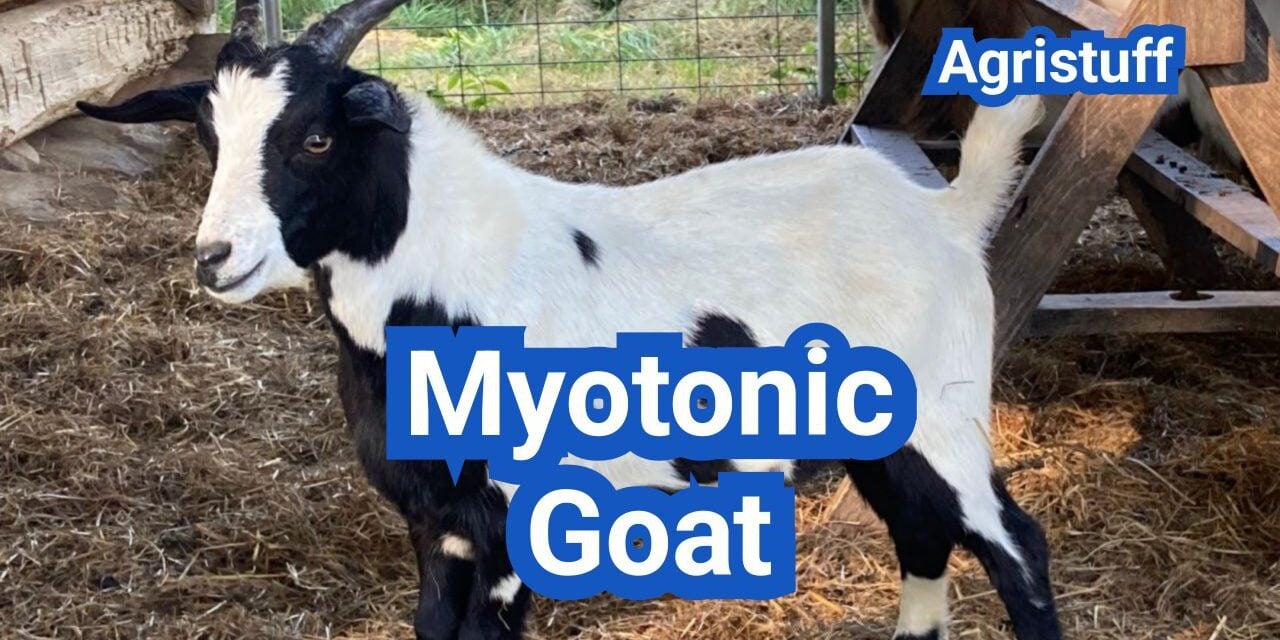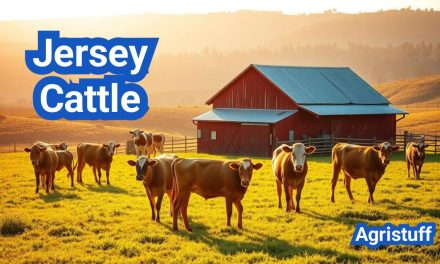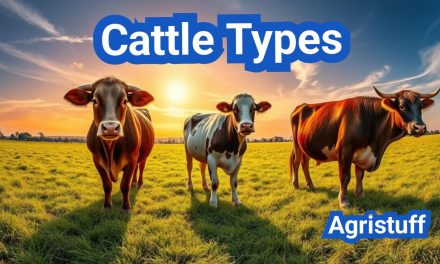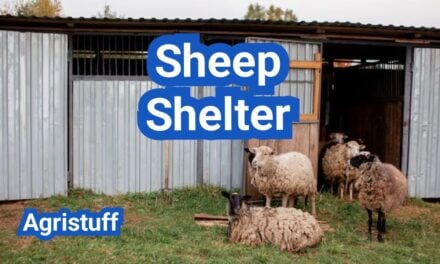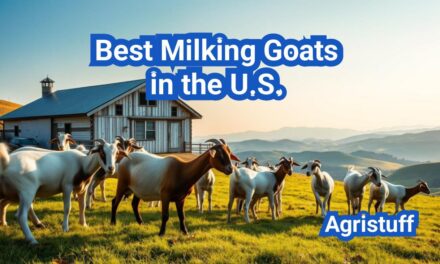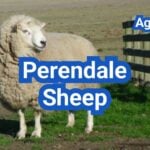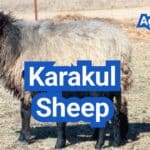The Myotonic Goat, also known as the Tennessee fainting goat or Wooden Leg goat, is an American breed with a unique condition called myotonia congenita. This breed has garnered significant attention for its distinctive “fainting” phenomenon.
Originating in the United States, the Myotonic Goat has a rich history and distinct characteristics that have contributed to its popularity. Its versatility in uses has made it a subject of interest among farmers and animal enthusiasts alike.
This article aims to provide a comprehensive overview of the Myotonic Goat, delving into its history, origin, characteristics, breeding, and various uses.
Key Takeaways
- Understanding the Myotonic Goat’s unique condition and characteristics.
- Exploring the breed’s history and origin in the United States.
- Learning about the various uses of Myotonic Goats.
- Discovering the breeding practices for this distinctive breed.
- Gaining insights into the popularity of Myotonic Goats among farmers and enthusiasts.
The History and Origin of Myotonic Goats
With roots tracing back to the 1880s, the Myotonic Goat has become an integral part of American agricultural heritage. The breed’s story began in Tennessee, where it was first introduced by John Tinsley, who brought four goats from Nova Scotia. These initial imports were crucial in establishing the foundation of the breed.
Early Development in Tennessee
The early development of the Myotonic Goat in Tennessee was marked by its unique characteristics, which quickly garnered attention. The breed’s fainting phenomenon, a condition known as myotonia congenita, became a defining trait. Local farmers recognized the potential of these goats and began breeding them to enhance their desirable qualities.
Introduction to American Agriculture
As the breed gained popularity, it was introduced to broader American agriculture. The Myotonic Goat’s hardiness and unique characteristics made it an attractive addition to farms across the country. Its ability to thrive in various conditions contributed to its successful integration into the agricultural landscape.
Historical Documentation and Recognition
Over time, the Myotonic Goat has been the subject of historical documentation, recognizing its significance within American agricultural history. The breed’s connection to Tennessee and its role as a valuable resource have been acknowledged through various registries and breed associations. Today, the Myotonic Goat is celebrated not only for its unique traits but also for its contribution to the heritage of American farming.
The history of the Myotonic Goat is a testament to the breed’s resilience and adaptability. From its origins in Tennessee to its widespread adoption across the United States, the Myotonic Goat has established itself as a valuable and intriguing breed.
Understanding the Myotonic Goat Breed

Understanding the Myotonic Goat breed requires a deep dive into its history, breed standards, and the organizations that support it. The Myotonic Goat is classified as a landrace breed, known for its muscularity and the unique “fainting” ability caused by myotonia congenita.
Breed Standards and Classification
The breed standards for Myotonic Goats emphasize their muscular build and the condition that causes them to “faint” when startled. Classification of the breed is based on these characteristics, as well as their overall conformation and temperament. Myotonic Goats are recognized for their distinctive physical features and are categorized accordingly.
The Tennessee Fainting Goat Connection
The Myotonic Goat is often associated with Tennessee, where it is commonly known as the Tennessee Fainting Goat. This connection is rooted in the breed’s history and development in the region. The “fainting” phenomenon, a result of myotonia congenita, is a hallmark of the breed and a key factor in its popularity.
Myotonic Goat Registry and Organizations
Several organizations are dedicated to the registration and preservation of the Myotonic Goat breed. The Myotonic Goat Registry is one such organization that maintains breed standards and records. These organizations play a crucial role in promoting the breed and ensuring its integrity through responsible breeding practices.
In conclusion, understanding the Myotonic Goat breed involves appreciating its unique characteristics, history, and the organizations that support it. By examining breed standards, the historical connection to Tennessee, and the role of registries, one can gain a comprehensive understanding of this fascinating breed.
The Science Behind Myotonia Congenita
Myotonic Goats owe their distinctive ‘fainting’ trait to myotonia congenita, a genetic disorder influencing muscle stiffness. This condition affects the muscle cells, leading to episodes of temporary paralysis and stiffness, commonly referred to as ‘fainting.’ Understanding this condition is crucial for breeders and researchers alike.
Explaining the “Fainting” Phenomenon
The ‘fainting’ phenomenon in Myotonic Goats occurs when the goats experience sudden muscle stiffness due to myotonia congenita. This stiffness can cause the goats to fall over, giving the appearance of fainting. It’s not a loss of consciousness but rather a physical inability to move due to muscle rigidity.
This condition is triggered by stress or excitement, which can cause a sudden release of certain neurotransmitters that affect muscle cells. The result is a temporary but dramatic display of muscle stiffness.
Genetic Basis of Myotonia
The genetic basis of myotonia congenita in Myotonic Goats is linked to a mutation affecting the muscle chloride channel. This mutation disrupts normal muscle function, leading to the characteristic stiffness and ‘fainting’ episodes. The condition is hereditary, passed down through generations of Myotonic Goats.
Understanding the genetic underpinnings of myotonia congenita is essential for developing breeding programs that manage the condition while preserving the unique characteristics of the breed.
Physical Characteristics of Myotonic Goats

One of the most recognizable features of Myotonic Goats is their sturdy build and varied coat colors. These goats are known for their robust physical characteristics, which make them stand out among other breeds.
Size, Weight, and Conformation
Myotonic Goats vary significantly in size, with weights ranging from 50 to 200 pounds. They have a stocky build, characterized by a muscular physique and a broad body structure. The conformation of Myotonic Goats is generally sturdy, with a compact body that is well-suited for their meat production capabilities.
The size and weight of Myotonic Goats can be influenced by several factors, including genetics, nutrition, and breeding practices. Generally, males tend to be larger than females, with more pronounced muscular development.
Coat Colors and Patterns
Myotonic Goats are known for their diverse range of coat colors and patterns. They can be found in a variety of colors, including white, black, brown, and red, as well as various combinations and patterns such as spotted or brindle.
- Common Coat Colors:White
- Black
- Brown
- Red
- Spotted or Brindle Patterns
Distinctive Physical Features
Myotonic Goats have several distinctive physical features that set them apart from other breeds. One of the most notable is their “bug-eyed” appearance, characterized by a prominent eye structure. They also tend to have a muscular build and a sturdy skeletal structure.
In addition to their physical build, Myotonic Goats are also known for their unique “fainting” behavior, which is a result of their myotonia congenita condition. This condition causes their muscles to stiffen when they are startled or excited, leading to a characteristic “fainting” or falling over.
Temperament and Behavior of Myotonic Goats
Understanding the behavior and temperament of Myotonic goats is crucial for anyone looking to raise or interact with them. These goats are renowned for their friendly and docile nature, making them an excellent choice for various purposes.
Personality Traits
Myotonic goats are known for their intelligence and adaptability. They are curious animals, often exploring their surroundings with interest. Their friendly nature makes them easy to handle, and they are generally docile, which is a significant advantage in managing them.
Their personality traits also include being relatively calm and not easily stressed, which contributes to their popularity among farmers and hobbyists alike.
Social Behavior and Herd Dynamics
Myotonic goats are social animals that thrive in herds. They exhibit complex social behavior, establishing a hierarchical structure within their groups. Understanding and managing their herd dynamics is essential for their well-being.
These goats require social interaction to stay healthy and happy. They communicate with each other through various vocalizations and body language, demonstrating their sophisticated social nature.
Breeding Myotonic Goats Successfully

Successful Myotonic Goat breeding programs depend on careful planning and selection of high-quality breeding stock. Breeding these unique animals requires a comprehensive understanding of their genetic traits, behavior, and breed standards.
Selecting Breeding Stock
When selecting breeding stock, it’s crucial to evaluate the genetic quality, health, and temperament of potential breeding animals. This involves assessing their conformity to breed standards, the presence of desirable traits such as myotonia congenita, and the absence of genetic disorders.
- Evaluate the animal’s pedigree and genetic history.
- Assess the animal’s physical condition and health status.
- Observe the animal’s behavior and temperament.
Breeding Programs and Strategies
Effective breeding programs for Myotonic Goats involve strategic planning to achieve specific goals, such as improving breed quality or expanding the gene pool. This may include line breeding, outcrossing, or other breeding strategies tailored to the program’s objectives.
- Define the breeding program’s goals and objectives.
- Select appropriate breeding strategies.
- Monitor and adjust the program as necessary.
- Maintain detailed records of breeding activities and outcomes.
Managing Genetic Traits
Managing genetic traits is critical in Myotonic Goat breeding, particularly in maintaining the breed’s characteristic myotonia congenita. This involves careful selection to preserve the trait while avoiding the amplification of undesirable genetic conditions.
By focusing on these key areas, breeders can develop successful Myotonic Goat breeding programs that enhance the breed’s quality and genetic diversity.
Raising and Caring for Myotonic Goats

Effective care for myotonic goats involves a comprehensive approach to their housing, nutrition, and daily needs. Providing the right environment and care is crucial for their health and well-being.
Housing Requirements
Myotonic goats need sturdy housing that protects them from predators and harsh weather conditions. The shelter should be well-ventilated, dry, and draft-free. A minimum of 10 square feet per goat is recommended inside the shelter.
Key Considerations for Housing:
- Sturdy construction to withstand weather and predators
- Adequate ventilation to prevent respiratory issues
- Easy cleaning and maintenance
Nutrition and Feeding
A balanced diet is essential for myotonic goats. They require high-quality hay, grass, and grains, along with access to fresh water at all times. Nutritional needs vary by age, size, and reproductive status.
| Nutritional Component | Recommended Daily Intake |
|---|---|
| Hay | 2-4% of body weight |
| Grains | 1-2 pounds per adult goat |
| Fresh Water | Access at all times |
Daily Care Routine
A daily care routine for myotonic goats includes monitoring their health, cleaning their living area, and providing fresh food and water. Regular checks for signs of illness or stress are crucial.
“Regular observation and quick action are key to maintaining the health of your myotonic goats.”
Daily tasks should also include hoof trimming and parasite control to prevent health issues.
Health Management for Myotonic Goats

Effective health management is essential for Myotonic Goats, involving preventative measures and veterinary care. Myotonic Goats are prone to certain health issues, making regular monitoring and timely intervention crucial.
Common Health Issues
Myotonic Goats are susceptible to various health problems, including parasites and genetic disorders. Parasites such as worms can significantly impact their health, while genetic disorders can affect their quality of life. Regular checks are vital to identify these issues early.
Preventative Care
Preventative care is a cornerstone of health management for Myotonic Goats. This includes vaccinations, parasite control measures, and nutritional management. A well-balanced diet and clean living conditions can significantly reduce the risk of health issues.
“A proactive approach to health care can prevent many common issues in Myotonic Goats.”
Working with Veterinarians
Collaboration with veterinarians is critical for maintaining the health of Myotonic Goats. Regular veterinary check-ups can help in early detection and treatment of health problems. Veterinarians can also provide guidance on preventative care and health management strategies tailored to the specific needs of the goats.
Regular health checks and preventative care are key to ensuring the well-being of Myotonic Goats. By understanding common health issues and working closely with veterinarians, breeders can maintain healthy herds.
Mini Myotonic Goats: A Smaller Variety

Smaller in stature but big in personality, Mini Myotonic Goats are gaining popularity among farmers and hobbyists alike. Mini Myotonics retain the fascinating myotonia congenita trait of their larger counterparts, making them a compelling option for many.
Characteristics of Mini Myotonics
Mini Myotonic Goats are characterized by their compact size and the same muscular stiffness as standard Myotonic Goats. They exhibit the breed’s signature “fainting” behavior when startled or excited. Key characteristics include:
- Compact Size: Mini Myotonics are significantly smaller than the standard breed, making them ideal for smaller farms or homesteads.
- Myotonia Congenita: They inherit the unique myotonia congenita trait, which can be both a fascinating spectacle and a consideration for handling.
- Breed Standards: Despite their smaller size, Mini Myotonics adhere to the breed standards in terms of conformation and temperament.
Special Care Considerations
Caring for Mini Myotonic Goats requires attention to their specific needs. Some key considerations include:
- Nutritional Needs: Ensuring they receive a balanced diet that meets their nutritional requirements, taking into account their smaller size.
- Housing: Providing appropriate shelter that protects them from the elements and predators, with consideration for their compact size.
- Health Checks: Regular health checks are crucial to monitor their health and address any issues related to their myotonia congenita.
Myotonic Goats as Meat Producers
Meat production from myotonic goats is a significant aspect of their utility in agriculture. These goats are prized for their high-quality meat, which is tender and flavorful, making them a valuable asset for farmers and consumers alike.
The demand for myotonic goat meat has been on the rise due to its leaner profile compared to other meats. Myotonic goats are bred specifically for their meat production capabilities, and their unique genetic traits contribute to the quality of the meat.
Meat Quality and Yield
Myotonic goats are known for their excellent meat yield. The breed’s muscular structure and growth rate make them ideal for meat production. The meat is not only abundant but also of high quality, with a fine texture that is appreciated by consumers.
Studies have shown that myotonic goat meat has a favorable fatty acid profile, making it a healthier option for consumers. The yield and quality of the meat are influenced by factors such as diet, breeding practices, and overall health management.
Sustainable Meat Production Practices
Sustainable meat production practices are crucial for maintaining the long-term viability of myotonic goat farming. This includes implementing rotational grazing, ensuring proper nutrition, and maintaining high standards of animal welfare.
By adopting sustainable practices, farmers can not only improve the quality of the meat but also contribute to environmental conservation.
“Sustainable agriculture is not just about producing food; it’s about preserving the land for future generations.”
This approach is particularly relevant for myotonic goat farming, where the goal is to produce high-quality meat while minimizing the environmental footprint.
Overall, myotonic goats offer a compelling option for meat producers looking to diversify their products with a sustainable and high-quality alternative.
Multiple Uses of Myotonic Goats

Myotonic goats are known for their versatility, offering a range of uses beyond their well-documented meat production. Their unique characteristics make them suitable for various roles on farms and in homes.
Beyond Meat: Other Products
Myotonic goats provide several products beyond meat, including their milk, which can be used to make cheese and other dairy products. Their hides can be tanned for leather, and their hair can be used for crafting various textiles.
The diversity of products obtainable from myotonic goats enhances their value to farmers and artisans. For instance, their milk is rich in nutrients and can be used to produce high-quality dairy products.
Myotonic Goats as Companion Animals
Myotonic goats are increasingly being kept as companion animals due to their gentle nature and relatively small size. They can form strong bonds with their owners and are often used in animal-assisted therapy programs.
Their calm demeanor makes them an excellent choice for families with children or for individuals looking for a unique pet.
Conservation and Heritage Value
Myotonic goats also hold significant conservation and heritage value. As a heritage breed, they are an important part of agricultural history and contribute to the genetic diversity of goat breeds.
Conservation efforts are in place to protect and promote the breed, ensuring its survival for future generations.
| Use | Description | Benefit |
|---|---|---|
| Meat Production | High-quality meat | Nutritional value |
| Companion Animals | Gentle nature | Emotional support |
| Conservation | Heritage breed | Genetic diversity |
Myotonic Goats in the United States

The distribution of myotonic goats in the U.S. is a testament to their adaptability and versatility. Myotonic goats are now found throughout the United States, with a presence in various agricultural landscapes.
Population Distribution
Myotonic goats are distributed across different regions in the United States, with varying population densities. States with larger agricultural areas tend to have higher populations of these goats, as they are often used for land management and meat production. The breed’s popularity among farmers and breeders has contributed to their widespread distribution.
Regional Adaptations
Myotonic goats have shown remarkable adaptability to different climates and environments across the United States. From the humid southeastern regions to the dry southwestern areas, these goats have demonstrated their ability to thrive in diverse conditions. Their hardiness and resilience make them a valuable asset for farmers in various parts of the country.
Finding and Selecting Myotonic Goat Breeders
For those interested in acquiring Myotonic Goats, identifying a reputable breeder is the first step towards a successful experience. The right breeder can provide healthy animals and valuable guidance, making the process smoother for new owners.
What to Look for in a Reputable Breeder
When searching for Myotonic Goat breeders, it’s essential to evaluate their reputation, breeding practices, and the overall health of their animals. A reputable breeder will be transparent about the health history of their goats, including any genetic testing that has been done. They should also be willing to provide references and share information about their breeding program.
Questions to Ask Before Purchasing
Before making a purchase, potential buyers should prepare a list of questions to ask the breeder. These might include inquiries about the goat’s lineage, health records, and the breeder’s experience with Myotonic Goats. Asking about the breeder’s policies on returns or guarantees can also provide insight into their professionalism and commitment to customer satisfaction.
By carefully selecting a reputable Myotonic Goat breeder and asking the right questions, buyers can ensure they are getting healthy animals and a positive overall experience.
The Future of the Myotonic Goat Industry
The Myotonic Goat industry is poised for growth, driven by emerging market trends and a renewed focus on sustainability. As consumers become more environmentally conscious, the demand for products from heritage breeds like the Myotonic Goat is expected to rise.
Market Trends and Opportunities
The Myotonic Goat industry is influenced by various market trends, including the increasing demand for sustainable meat production and the growing interest in companion animals. Breeders who adapt to these trends by diversifying their products and services are likely to capitalize on new opportunities. For instance, the rise in demand for locally sourced meat products presents a significant opportunity for Myotonic Goat breeders.
Preservation Efforts and Sustainability
Preservation efforts are crucial for maintaining the genetic diversity of the Myotonic Goat breed. Conservation programs and registries play a vital role in ensuring the breed’s sustainability. By supporting these initiatives, breeders and consumers can contribute to the long-term viability of the Myotonic Goat industry. Sustainable practices, such as rotational grazing and humane treatment of animals, are also essential for the industry’s future.
The Enduring Appeal of Myotonic Goats
Myotonic Goats have a distinct appeal due to their unique characteristics and versatile uses. Their fascinating history, coupled with their intriguing “fainting” phenomenon, has captivated breeders and enthusiasts alike. The breed’s heritage value and multiple uses, including meat production and conservation, further contribute to their enduring popularity.
The myotonic goat characteristics, such as their muscular build and gentle disposition, make them an attractive choice for various agricultural and conservation purposes. As a result, Myotonic Goats continue to be sought after by farmers, breeders, and conservationists, ensuring their continued relevance in modern agriculture.
The myotonic goat uses extend beyond meat production, with their unique characteristics making them valuable for various purposes, including companion animals and conservation efforts. As the demand for sustainable and heritage breeds grows, the appeal of Myotonic Goats is likely to endure, securing their place in the future of American agriculture.
FAQ
What is the origin of the Myotonic Goat breed?
The Myotonic Goat breed originated in the United States, specifically in Tennessee, where it was developed from goats brought from Nova Scotia.
What is myotonia congenita, and how does it affect Myotonic Goats?
Myotonia congenita is a genetic condition that causes muscle stiffness and temporary paralysis, resulting in the characteristic “fainting” episodes in Myotonic Goats.
What are the distinctive physical characteristics of Myotonic Goats?
Myotonic Goats are known for their stocky build, wide range of coat colors and patterns, and distinctive features such as muscularity and a “bug-eyed” appearance.
What is the temperament of Myotonic Goats like?
Myotonic Goats are friendly, docile, and social animals that thrive in herds and exhibit complex social behavior.
How do I breed Myotonic Goats successfully?
Successful breeding of Myotonic Goats involves selecting high-quality breeding stock, implementing effective breeding programs, and managing genetic traits such as myotonia congenita.
What are the housing and nutritional needs of Myotonic Goats?
Myotonic Goats require adequate housing, a balanced diet, and regular care to maintain their health and well-being.
What are some common health issues in Myotonic Goats, and how can they be prevented?
Common health issues in Myotonic Goats include parasites and genetic disorders, which can be prevented through regular care, preventative measures, and collaboration with veterinarians.
What is the difference between standard and mini Myotonic Goats?
Mini Myotonic Goats are a compact version of the breed, offering the same unique characteristics in a smaller package, and require special care considerations.
What are Myotonic Goats used for?
Myotonic Goats are valued for their meat production capabilities, and also offer other uses such as companionship, conservation, and heritage value.
How do I find a reputable Myotonic Goat breeder?
To find a reputable Myotonic Goat breeder, research and due diligence are necessary, looking for breeders with a good reputation, sound breeding practices, and healthy animals.
What is the future of the Myotonic Goat industry?
The future of the Myotonic Goat industry depends on various factors, including market trends, preservation efforts, and sustainability concerns.
Conclusion of: Myotonic Goat Breed
Introduction to the Myotonic Goat
The Myotonic Goat, often called the Tennessee Fainting Goat, is one of the most recognizable goat breeds in the United States because of its unusual tendency to “freeze” and sometimes fall over when startled. Beyond the funny videos that circulate online, the Myotonic Goat is a serious meat breed with heavy muscling, good mothering ability, and a calm temperament that suits small farms, homesteads, youth projects, and beginner goat keepers across the USA.
For U.S. producers looking for a low-maintenance meat goat that is easier to contain and well adapted to forage-based systems, the Myotonic Goat can be an excellent option and an important part of a diverse livestock operation. Learn more about the Myotonic Goat as an American heritage breed from The Livestock Conservancy
History and Origin of the Myotonic Goat
The history of the Myotonic Goat traces back to the 1880s in central Tennessee, where a farm worker named John Tinsley reportedly arrived with a small group of unusual goats that showed the characteristic muscle-locking response. Those animals and their descendants formed the foundation of what later became known as the Myotonic Goat, spreading from Tennessee into Texas and other states as farmers recognized their meat qualities and easy management.
Over time, some breeders in Tennessee emphasized the compact, traditional Myotonic Goat type, while ranchers in Texas selected larger, faster-growing lines for meat production, sometimes marketing them as Tennessee Meat Goats or Wooden Leg Goats. Oklahoma State University’s Breeds of Livestock project documents the historical development of the Myotonic Goat and its Tennessee and Texas strains
Geographic Distribution and Conservation Status of the Myotonic Goat
Although the Myotonic Goat began as a regional breed in Tennessee, today the Myotonic Goat can be found across much of the United States, especially in the Southeast, the South-Central region, and increasingly in small farm herds throughout the country. The Myotonic Goat is considered a uniquely American landrace breed that adapted to local conditions and management styles.
It was once listed as rare due to small population numbers, but growing interest from homesteaders, hobby farmers, and specialty meat markets has helped the Myotonic Goat move into a more secure conservation category. Even so, it remains important to manage the Myotonic Goat as a genetic resource and to avoid excessive crossbreeding that could dilute its unique characteristics. The Livestock Conservancy currently classifies the Myotonic Goat as a recovering heritage meat breed that still needs active conservation
Physical Characteristics of the Myotonic Goat
The Myotonic Goat is a medium-sized meat breed, with adults typically ranging from about 50 to 175 pounds depending on the strain, sex, and nutrition level, and a well-grown Myotonic Goat shows a compact, heavily muscled body with a deep chest and broad, well-developed hindquarters. Coat length in the Myotonic Goat can vary from short and smooth to long and shaggy, and colors include nearly every goat color and pattern, though black-and-white combinations are common.
The head of the Myotonic Goat is usually slightly dished to straight, with medium horizontal ears and horns that may be large and twisted or small and simple, while some lines are polled. These physical traits, combined with the breed’s muscular build related to myotonia, make the Myotonic Goat particularly attractive for meat production and specialty markets. Detailed descriptions of Myotonic Goat size, coat, and conformation are provided by The Livestock Conservancy
Understanding the Myotonia Condition in the Myotonic Goat
The defining feature of the Myotonic Goat is congenital myotonia, a heritable neuromuscular condition that causes delayed relaxation of the muscles after contraction, so a startled Myotonic Goat may briefly stiffen and sometimes fall over. This reaction is not a true faint, because the Myotonic Goat does not lose consciousness; instead, the condition affects muscle ion channels and leads to temporary stiffness.
Most animals learn to cope with the response, and a well-managed Myotonic Goat generally lives a normal, productive life. Genetic studies show that myotonia in the Myotonic Goat is linked to specific mutations, and responsible breeders can use DNA testing on breeding stock to manage the trait while maintaining breed identity and overall herd health. The UC Davis Veterinary Genetics Laboratory explains congenital myotonia in goats and offers a test relevant to Myotonic Goat breeding programs
Temperament and Behavior of the Myotonic Goat
The Myotonic Goat is widely appreciated for its calm, people-friendly disposition, which makes the Myotonic Goat suitable for novice owners, families, youth projects, and educational farms. Compared with more athletic breeds, the Myotonic Goat is less inclined to jump, climb, or challenge fences because myotonia encourages a more cautious and grounded style of movement.
As a result, it is often easier to keep a Myotonic Goat herd contained with moderate fencing, which can reduce infrastructure costs on small properties. At the same time, the Myotonic Goat remains an active forager that will browse brush, weeds, and shrubs, making this breed useful for vegetation management and land improvement on U.S. acreages. The Livestock Conservancy notes that the Myotonic Goat is docile, easily contained, and well suited to low-input, forage-based systems
Meat Production Qualities of the Myotonic Goat
One of the main reasons U.S. producers choose the Myotonic Goat is its meat performance: the Myotonic Goat is heavily muscled, especially through the loin and hindquarters, and research and field observations suggest that the breed often has a higher meat-to-bone ratio than many other goat breeds. Because the myotonia in the Myotonic Goat effectively acts like repeated isometric exercise, muscle fibers become well developed and dense.
Carcasses from the Myotonic Goat are often described as lean yet tender, with excellent eating quality suitable for direct farm sales, ethnic markets, and specialty meat customers. For small-scale meat operations in the USA, crossing a Myotonic Goat with other meat breeds can also add muscling while preserving hardiness, although maintaining pure Myotonic Goat lines is vital for conservation and seedstock production. The Livestock Conservancy highlights the heavy muscling and favorable carcass traits that make the Myotonic Goat valuable in meat production
Other Uses and Roles of the Myotonic Goat
Beyond meat, the Myotonic Goat plays several other roles on American farms and in rural communities, with many people keeping the Myotonic Goat as a pet, show animal, or novelty breed because of its striking behavior and friendly nature.
Some lines of the Myotonic Goat produce a small amount of cashmere undercoat, and wethers or non-breeding animals can be used for brush control and land restoration projects. Historically, the unusual myotonia of the Myotonic Goat has also attracted the interest of scientists studying muscle physiology, ion channel disorders, and genetic myopathies, so this breed contributes to research as well as agriculture and recreation. Oklahoma State University notes that the Myotonic Goat is valued as a meat animal, a pet, and a novelty breed due to its unique stiffening response
Breeding and Reproduction in the Myotonic Goat
From a reproductive standpoint, the Myotonic Goat is known for good fertility, and many Myotonic Goat does are prolific, often producing twins or triplets and sometimes kidding more than once per year under favorable management. Because the Myotonic Goat is a landrace breed, there is natural variation in size, muscling, and myotonia strength, so breeders should define clear goals—such as maximizing meat production, maintaining moderate myotonia, or developing smaller novelty lines—and select Myotonic Goat breeding stock accordingly.
Responsible Myotonic Goat breeders pay attention to genetic diversity, avoid excessive inbreeding, and may use DNA tests for congenital myotonia or other traits to guide mating decisions and keep the population healthy. The Livestock Conservancy encourages breeders to balance Myotonic Goat selection for production with long-term conservation of the breed’s genetics
Housing, Fencing, and Handling of the Myotonic Goat
The Myotonic Goat generally requires the same basic housing and fencing as other goats, but the Myotonic Goat is often easier to contain because it jumps and climbs less aggressively than many dairy and meat breeds. Shelter for the Myotonic Goat should provide dry bedding, protection from wind, rain, and extreme temperatures, and enough space for animals to move freely and lie comfortably. Fencing for a Myotonic Goat herd can usually be built with standard woven wire or goat netting, though producers should still check regularly for damage and potential escape routes.
Because a startled Myotonic Goat may stiffen and fall, calm handling, non-slippery flooring, and avoiding sudden loud noises help reduce the risk of minor injuries and stress. Mississippi State University Extension’s meat goat management guide provides practical recommendations on housing, fencing, and handling that work well for Myotonic Goat herds
Feeding and Nutrition for the Myotonic Goat
Nutritional needs of the Myotonic Goat are similar to those of other meat goats, and a Myotonic Goat should receive a forage-first diet based on good pasture, browse, or high-quality hay. Grain or concentrate supplements can be added for growing kids, late-gestation and lactating does, or show animals, but every Myotonic Goat should be monitored carefully to avoid overconditioning or digestive problems. Because the Myotonic Goat can show excellent growth and muscling, balanced nutrition is important to support skeletal and muscle development, especially in fast-growing lines used for meat production.
For U.S. producers, free-choice minerals formulated for goats, clean water, and seasonal adjustments in feed type and quantity are essential to keep a Myotonic Goat herd healthy and productive in different climates. Penn State Extension provides detailed guidelines on goat nutrition and feeding that can be applied when planning rations for Myotonic Goat herds
Health Care and Disease Management in the Myotonic Goat
The Myotonic Goat does not suffer more diseases than other breeds, and with good management the Myotonic Goat is generally hardy and long-lived. Like other goats, a Myotonic Goat herd needs a sound vaccination program, often including clostridial vaccines such as CDT, along with an internal parasite control plan based on fecal testing and selective treatment. Routine hoof trimming, body condition scoring, and observation for signs of lameness, respiratory disease, or digestive issues are important for maintaining Myotonic Goat health.
While myotonia in the Myotonic Goat is lifelong, it is typically non-progressive and not considered painful, but breeders and veterinarians should understand the genetic basis so they can make informed decisions about selection and herd management. Goats Extension provides an overview of goat health and herd management practices that are directly applicable to Myotonic Goat herds
The Myotonic Goat on U.S. Farms and Homesteads
For many small farms and homesteads in the USA, the Myotonic Goat offers a practical combination of meat production, ease of handling, and unique personality, making the Myotonic Goat a popular choice where land and time are limited. Because the Myotonic Goat is easier to fence and often more docile than some high-strung dairy or meat breeds, families with children or new goat keepers frequently rank this breed as beginner-friendly, provided that basic training and supervision are in place.
At the same time, serious meat producers appreciate that the Myotonic Goat can contribute superior muscling and carcass traits, particularly in crossbreeding programs that still maintain purebred Myotonic Goat lines for long-term genetic security. Oklahoma State University emphasizes both the practical meat value and the pet appeal of the Myotonic Goat for U.S. producers
Is the Myotonic Goat Right for Your Operation?
Deciding whether the Myotonic Goat is the right breed depends on your goals, climate, marketing strategy, and management style, but for many U.S. operations the Myotonic Goat matches well with forage-based systems, modest infrastructure, and family-scale production. If your priority is a heavily muscled, mid-sized meat goat that is easier to contain and has a calm temperament, the Myotonic Goat deserves serious consideration, especially in regions where browse and mixed pasture are available.
Prospective owners should visit established Myotonic Goat breeders, review registration and health records, and consult local extension agents or veterinarians familiar with small ruminant production in their area to design a realistic management plan. Oregon State University Extension encourages producers to match breed choice, including the Myotonic Goat, with available resources and long-term production goals
Final thought
The Myotonic Goat is far more than a curiosity on social media; it is a uniquely American heritage meat breed that can provide lean, flavorful meat, friendly companions, and valuable genetic diversity for the future of U.S. goat production. A well-managed Myotonic Goat herd can thrive on modest resources while delivering solid returns and enhancing the resilience of small farms and homesteads. By understanding the history, genetics, care, and breeding considerations of the Myotonic Goat, producers and homesteaders can use this distinctive breed responsibly, support conservation, and build forage-based systems that fit many U.S. environments. Reading The Livestock Conservancy’s Myotonic Goat profile alongside university extension resources is a strong starting point for anyone considering this breed
Sources & References
- The Livestock Conservancy – Myotonic or Tennessee Fainting Goat breed profile
- Oklahoma State University – Myotonic (Wooden Leg) Goats breed description
- UC Davis Veterinary Genetics Laboratory – Congenital Myotonia (CM) in Goats
- MSD Veterinary Manual – Genetic Myopathies in Ruminants and Pigs (includes caprine myotonia)
- Mississippi State University Extension – Meat Goat Management
- Penn State Extension – Goat Nutrition and Feeding
- Goats Extension – Goat Health

